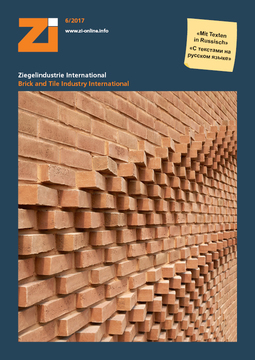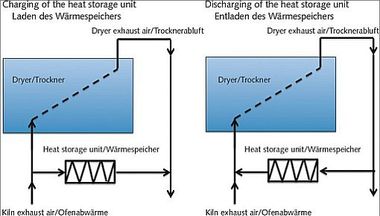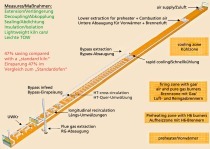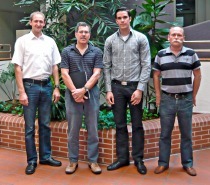Optimizing the energy efficiency of a tunnel kiln by decoupling the kiln/dryer heat cycle
Decoupling the kiln/dryer heat cycle by means of an upstream or downstream kiln tunnel is an inexpensive way to optimize the energy efficiency of a clay products plant. This not only improves its energy balance in general, but also maximizes its energy efficiency. Decoupling makes it possible to optimally employ the energy resources in accordance with their respective qualities while achieving maximum overall efficiency. With presently or soon to be available technology, energy expenditures can be reduced by as much as approx. 35 % within a relatively short time.
Medium-term savings of 50 % or more appear feasible. By way of a concrete example, and based on actual energy audits, this paper presents ways and means of dissolving an existing kiln/dryer heat cycle and describes how reducing the kiln‘s exhaust temperature can save substantial amounts of energy and attendant costs. Moreover, future perspectives are offered on the design of brickyards with essentially emission-neutral production capabilities.
Prof. Dr.-Ing. Christian Schäffer, Hochschule Koblenz,
Werkstofftechnik Glas und Keramik






